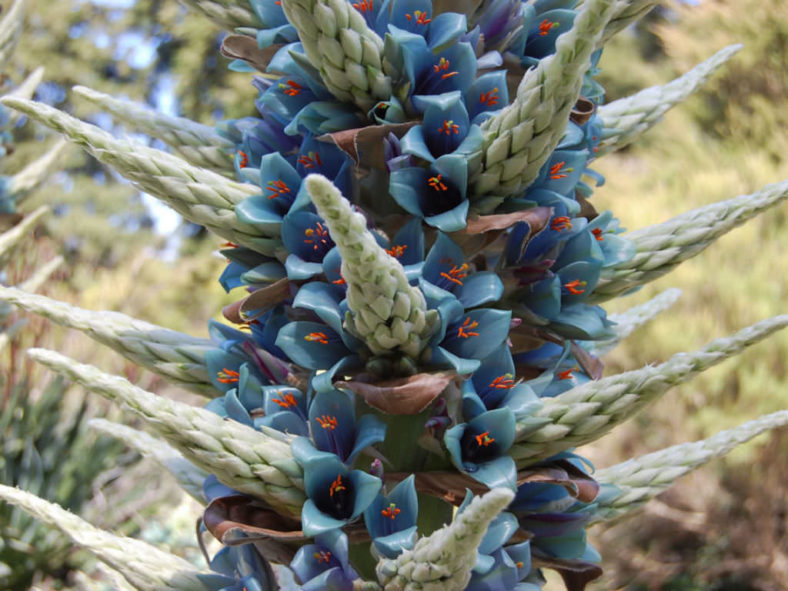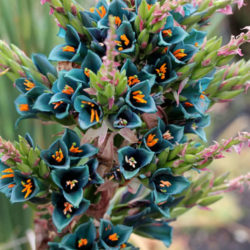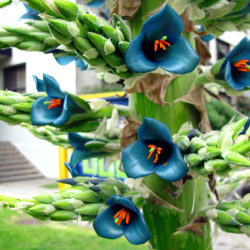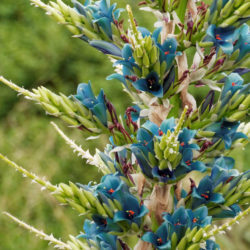Scientific Name
Puya alpestris Gay
Common Name(s)
Mountain Puya, Sapphire Tower
Synonym(s)
Pitcairnia alpestris, Pourretia alpestris, Puya alpestris subsp. alpestris
Scientific Classification
Family: Bromeliaceae
Subfamily: Pitcairnioideae
Genus: Puya
Description
Puya alpestris is an amazing plant that forms a clump of rosettes of bright green leaves covered beneath with a dense coating of white scales and with very lax spines along the margins. The leaves are narrow, arched-recurving, up to 2 feet (60 cm) long, and up to 1 inch (2.5 cm) wide.
The flowers are unearthly, metallic-looking, deep turquoise with vivid orange stamens. They appear in spring, but usually not every year, and are held on branched stalks that can reach up to 5 feet (1.5 m) in height. Each branch of the inflorescence terminates in a long sterile branch with numerous reduced pink bracts and acts as a perch for nectar-feeding birds. The fruits are capsules with many small, airworthy seeds. After the seed development, the rosette slowly dies.
Origin
Puya alpestris is native to south-central Chile. It grows on dry slopes in the Andes at elevations of up to 6,560 feet (2,200 m).

Hardiness
USDA hardiness zone 9a to 11b: from 20 °F (−6.7 °C) to 50 °F (+10 °C).
How to Grow and Care
You can get Blue Puya seed and start the plants yourself in a greenhouse. Puyas are slow to germinate and require at least 70 degrees Fahrenheit (21 degrees Celsius). Use well-drained potting soil in a seed flat. Keep the seeds moderately moist until they sprout. Once you see seedlings, move the flat to a brightly lit area with protection from the harsh light of midday.
Transplant the seedlings when they have formed a rosette. Plants can tolerate a crowded pot. In USDA zones 8 to 11, you can transplant rosettes to the garden, but they will have to be moved indoors in winter in other zones. Up until the cold temperatures appear, Blue Puya makes a great patio specimen.
Water Puya plants in the ground once per week in summer. Potted plants should be watered when the top couple of inches of soil have dried out. Water the plant only once per month in winter when the plant is dormant. Fertilize with diluted succulent food or indoor plant food in spring. Remove spent foliage from the rosettes for the best appearance.
See more at How to Grow and Care for Blue Puya.
Links
- Back to genus Puya
- Succupedia: Browse succulents by Scientific Name, Common Name, Genus, Family, USDA Hardiness Zone, Origin, or cacti by Genus
Photo Gallery
Click on a photo to see a larger version.



